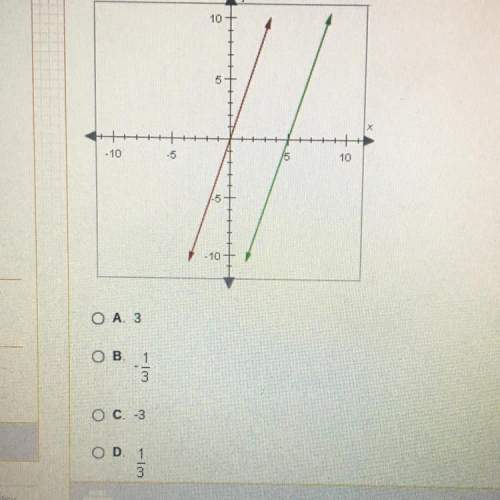
Mathematics, 15.10.2020 09:01 destinyw329
PLEASE HELP
You are creating identical coupon books to sell for a fundraiser. You have 32 dry cleaning coupons, 80 coupons for a local restaurant, and 47 movie theater coupons.
A-Can you create Multiple identical coupon books using all of the coupons?
B- You find one additional movie theater coupon. What is the greatest number of identical coupon booklets can you make?
C-Find the number of each type of coupon in one of the booklets from part b.

Answers: 1


Another question on Mathematics


Mathematics, 21.06.2019 19:10
Girardo is using the model below to solve the equation . girardo uses the following steps: step 1 add 4 negative x-tiles to both sides step 2 add 1 negative unit tile to both sides step 3 the solution is which step could be adjusted so that gerardo's final step results in a positive x-value? in step 1, he should have added 4 positive x-tiles to both sides. in step 1, he should have added 3 negative x-tiles to both sides. in step 2, he should have added 4 negative unit tiles to both sides. in step 2, he should have added 1 positive unit tile to both sides.
Answers: 2

Mathematics, 21.06.2019 22:30
Whit h equation best represents this situation the number 98 increased by an unknown number equal to 120
Answers: 1

Mathematics, 21.06.2019 23:20
Triangle xyz, with vertices x(-2, 0), y(-2, -1), and z(-5, -2), undergoes a transformation to form triangle x? y? z? , with vertices x? (4, -2), y? (4, -3), and z? (1, -4). the type of transformation that triangle xyz undergoes is a . triangle x? y? z? then undergoes a transformation to form triangle x? y? z? , with vertices x? (4, 2), y? (4, 3), and z? (1, 4). the type of transformation that triangle x? y? z? undergoes is a .
Answers: 2
You know the right answer?
PLEASE HELP
You are creating identical coupon books to sell for a fundraiser. You have 32 dry clean...
Questions





Computers and Technology, 30.03.2020 20:57


English, 30.03.2020 20:57

Biology, 30.03.2020 20:57


Mathematics, 30.03.2020 20:57


English, 30.03.2020 20:57





Physics, 30.03.2020 20:58







